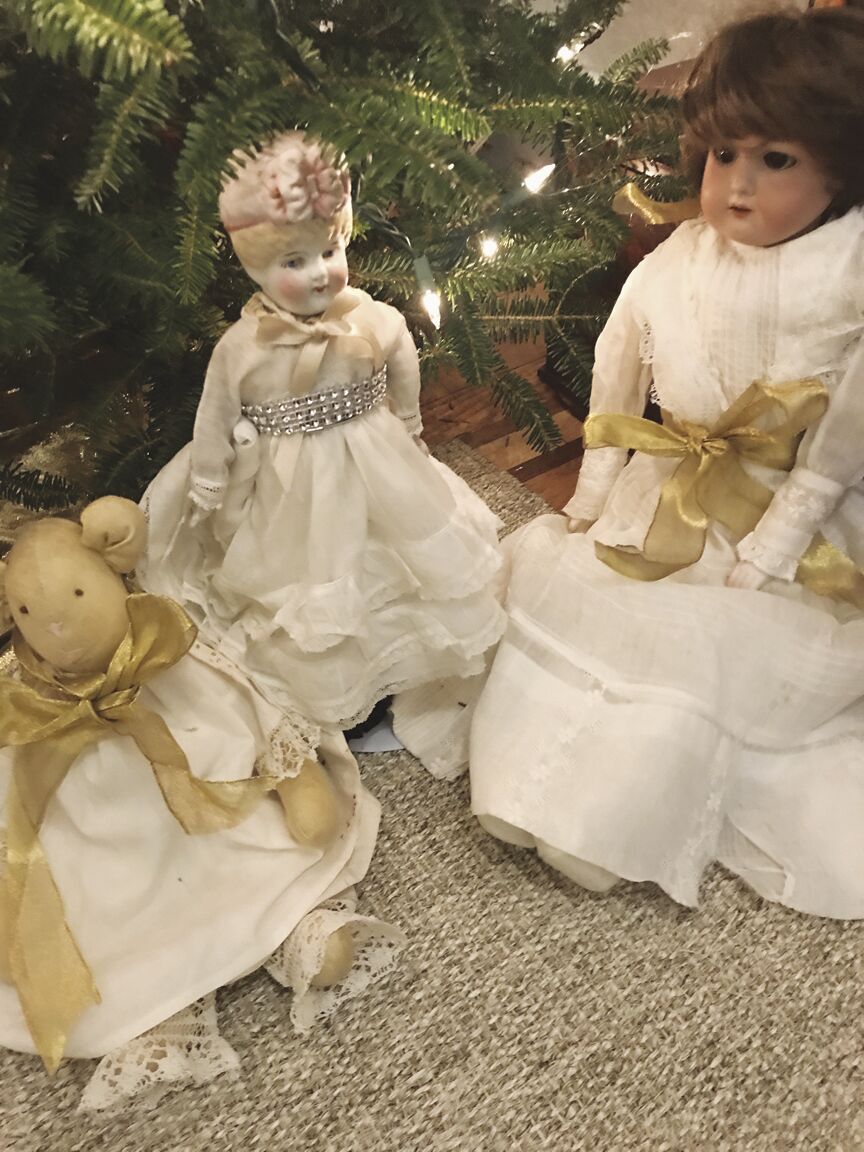Creating Traditions
 Originally published in The Laconia Daily Sun ›
Originally published in The Laconia Daily Sun ›
It is the tradition of holidays that we recall, stirring our memories of time past and connecting us with the present. Christmas has myriad traditions, allowing us a month when the sense is that our lives have, in one way or another, been transformed.
When I think back to my childhood it is with wonder that our home was magically transformed into a place of enchantment with boughs of evergreens, holly, satin ribbon, strings of lights and the scent of baking, sweet rolls, cookies and fruit cake, wafting through the air. A large rectangular mirror became an ice-covered pond with the addition of rolled cotton batting along the edge and as miniature painted metal figurines appeared to be skating across the ice. A white soup tureen assumed an elegant pose with red satin ribbon and fragile Christmas balls tied around the handle.
As young children, just as our imaginations are forming, we are introduced to a mythical character, Saint Nicholas, so real we remember the feel of his synthetic white beard against our skin and can remember touching the soft velvet of his red pants, sitting on his knee. We trusted his twinkling eye and gentle nod as assurance that the toys we have asked for, whispering in his ear, will be under the Christmas tree, in one form or another, on that magical morning.
It is because our traditions have been so disrupted this year, that I have thinking about their meaning.
Even though I traditionally spend Christmas in New Hampshire, I always have a Christmas tree in my New York apartment. Thanksgiving Day, a large flatbed truck, piled high with trees would arrive on Lexington Avenue, just a block from where I live. A group of “elves”, led by an energetic man wearing a leather jacket with a long ponytail flowing down his back, would transform the sidewalk into “Santa’s Village.” In addition to the trees, stacked up against a high fence around the park and playground, a small white shed with a lighted reindeer on the roof, appearing to be leaping into the sky, was a sign that read: “The North Pole.”
Christmas music filled the air up and down the street. A green outdoor carpet covered the grid on the sidewalk. As people entered and exited the subway entrance on the corner, and you could see the smiles on their faces as they walked down the block. Past parents and children selecting a tree. The children squealing in delight. Past young couples holding hands and carefully checking the price on a small Charlie Brown tree. Past a gentleman dressed man in tweeds, cashmere and soft leather gloves studying the largest tree of them all, with a trunk that was probably, at a minimum, twelve inches around. All examining their trees, imagining the transformation in their grand homes or small studio apartments.
This year I noticed the trees were not there the day after Thanksgiving. Or the next. The block that let us all know that Christmas has arrived is dark and bare. Of course, the financial risk is too great as many people have left the City. The risk of infection is too high for the workers who are not from New York and must find a place to stay. Coffee shops where they could dip in for warmth on bone chilling days are closed. I realized I never asked the man with the long ponytail his name, I just knew him through his warm smile and nod of recognition, year after year after year.
Transformation isn’t static. Transformation implies change. So now, as I think about where to buy my Christmas tree this year, I’m thinking about new traditions. Our challenge during this holiday season is to think about ways we can reach out to others and play a role in creating new traditions that will make this holiday one that is memorable, a year of transformation. Help the community by shopping locally. Deliver holiday meals to those who will be alone because their families cannot travel. Reach out to neighbors you haven’t met.
Christmas by Vladimir Nabokov is one of my favorite Christmas stories. A father, mourning the death of his small son, spends Christmas Eve at their summer manor. He is alone and consumed with grief. His son had collected butterflies and the father discovers a box in his room with a cocoon. The father carries it with him into the warm sitting room. On Christmas morning, “The cocoon in the biscuit tin had burst at its tip, and a black, wrinkled creature the size of a mouse was crawling up the wall above the table. It had emerged from the chrysalid because a man overcome with grief had transferred a tin box to a warm room.” A lovely Attacus moth appears. (translated from the Russian and published in The New Yorker, December 29, 1975).
May you enjoy good health and the enchantment that defines this season. Perhaps you can find a tin box and carry it into a warm room … Take Joy!